Doctor en Ciencia Animal, con énfasis en genética cuantitativa y modelación. Formación profesional en Zootecnia. Profesor Investigador del grupo de investigación Ciencia Animal en la Facultad de Ciencias Agropecuarias de la Universidad de Ciencias Aplicadas y Ambientales U.D.C.A. Investigación en metodologías de genética cuantitativa, de poblaciones y el uso de información genómica para programas de mejoramiento genético de especies domésticas, principalmente en bovinos, peces y especies menores. Dirección de proyectos de investigación a escala nacional con la participación de instituciones educativas y de investigación como la Universidad Nacional de Colombia, Universidad de Antioquia, Universidad de Massey (Nueva Zelanda) y la Corporación Colombiana de Investigación Agropecuaria AGROSAVIA. Consultoría y asesoría a la asociación de criadores de ganado Simmental y Simbrah de Colombia (Asosimmental) a través de análisis de variabilidad genética, patrones de ancestría, evaluación genética con inclusión de información genómica y el desarrollo de índices de selección soportado en metodologías bioeconómicas para optimizar el progreso genético y económico de características asociadas a producción de carne y leche.
GRUPOS DE INVESTIGACIÓN: CIENCIA ANIMAL
LÍNEAS DE INVESTIGACIÓN: Salud Humana y Animal y Sostenibilidad Ambiental
LINEAS DE TRABAJO: Genética Cuantitativa, Modelación y Estadística, Selección Genómica, Genética de Poblaciones.
PRODUCTOS DESTACADOS
Selection indexes using principal component analysis for reproductive, beef and milk traits in Simmental cattle
Fecha de publicación: 01/07/2021
Selection indexes in dual-purpose cattle should include beef, milk and reproductive traits. The principal component analysis is a multivariate technique that allows researchers to explore relationships between explanatory variables and traits of interest. The objective of this study was to construct selection indexes for tropical dual-purpose Simmental cattle based on principal components. The evaluated traits were weight at 8 months of age; age at first calving; cumulative first-lactation milk yield at 60, 150, 210 and 305 days; and first calving interval. The selection indexes were estimated as the sum of the products of the estimated breeding values for the seven traits times their respective eigenvectors for the first three principal components. The three selection indexes from principal components analysis generated favourable expected genetic progress for all the traits. However, a selection index with a high expected genetic progress for all traits could not be obtained. The principal component analysis allows breeders to have a selection index that simultaneously improves milk, beef and reproductive traits in dual-purpose Simmental cattle. Because a selection index yielding high expected genetic progress for all traits could not be achieved, the decision to use a specific selection index will depend on the specific conditions of the market, the local needs and the farmer preference.
Más información ⇨
- « Anterior
- 1
- 2
- 3
- 4
- 5
- 6
- …
- 11
- Siguiente »

